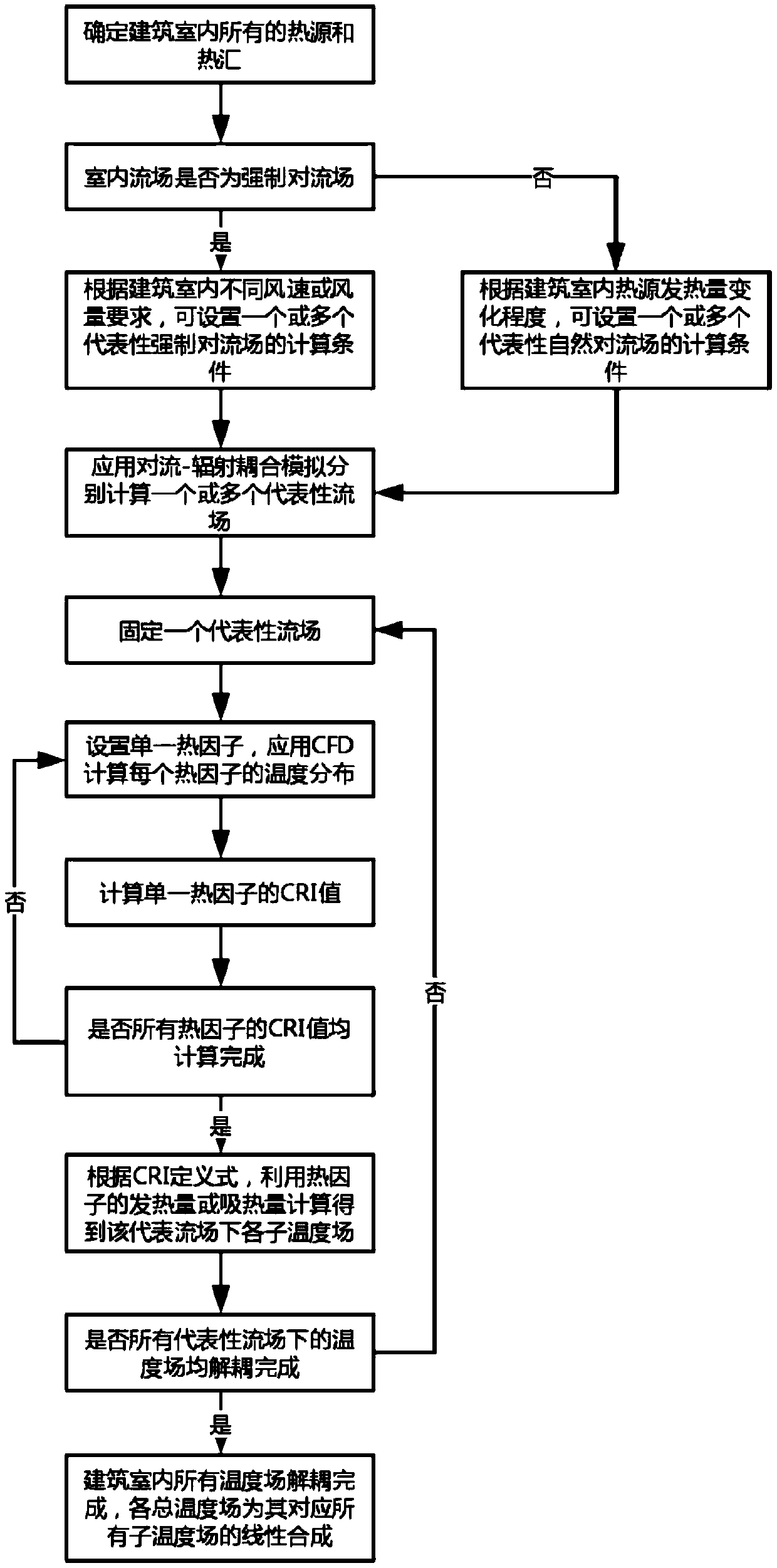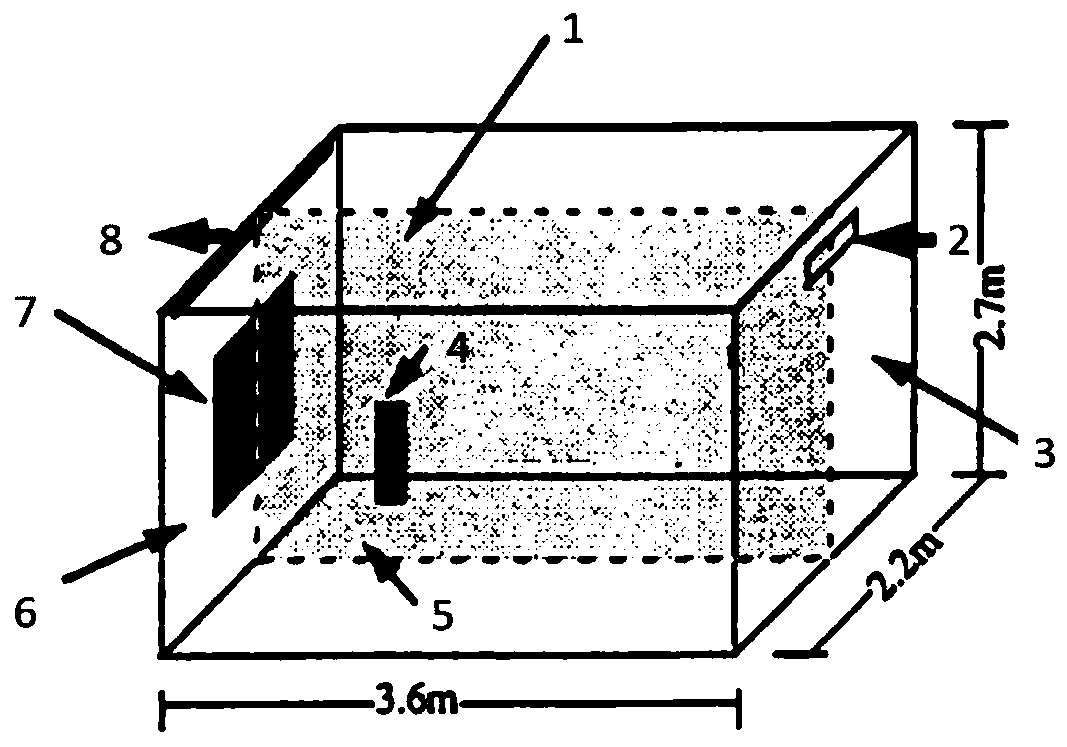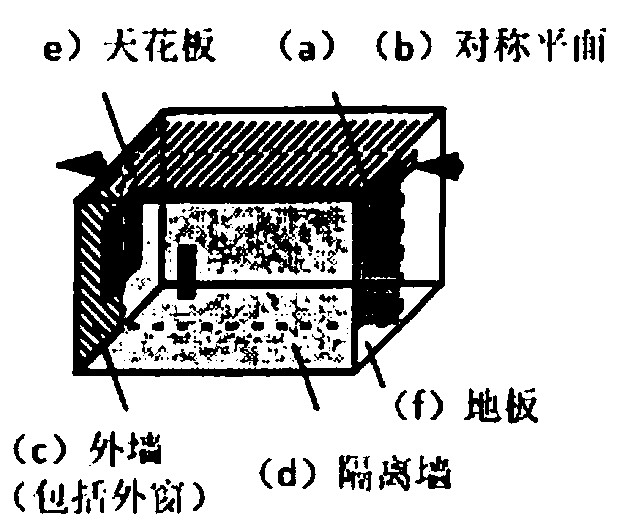Method for decoupling indoor temperature field of building
A technology of indoor temperature and temperature field, applied in the direction of instrument, design optimization/simulation, electrical digital data processing, etc., can solve the problem of heavy CFD calculation load, achieve the effect of design optimization and improve accuracy
- Summary
- Abstract
- Description
- Claims
- Application Information
AI Technical Summary
Problems solved by technology
Method used
Image
Examples
Embodiment 1
[0068] The technical solution of the present invention will be described in detail below in conjunction with the accompanying drawings.
[0069] A method for decoupling the indoor temperature field of a building according to the present invention, the specific steps are as follows:
[0070] In step S1, all thermal factors in the building must be determined first.
[0071] The heat factor includes a heat source term and a heat sink term. CRI is to study the influence of independent thermal factors in the temperature field on the temperature field. First, the thermal factors of specific heat sources or sinks in the temperature field must be determined. The indoor thermal environment will be affected by many thermal factors from indoors and outdoors, mainly including heat transfer of building envelope, supply of hot and cold air by air conditioning system, radiant cooling or heating, ventilation, infiltration, and heat production of lights, equipment, and human body , these the...
PUM
 Login to View More
Login to View More Abstract
Description
Claims
Application Information
 Login to View More
Login to View More - R&D
- Intellectual Property
- Life Sciences
- Materials
- Tech Scout
- Unparalleled Data Quality
- Higher Quality Content
- 60% Fewer Hallucinations
Browse by: Latest US Patents, China's latest patents, Technical Efficacy Thesaurus, Application Domain, Technology Topic, Popular Technical Reports.
© 2025 PatSnap. All rights reserved.Legal|Privacy policy|Modern Slavery Act Transparency Statement|Sitemap|About US| Contact US: help@patsnap.com



